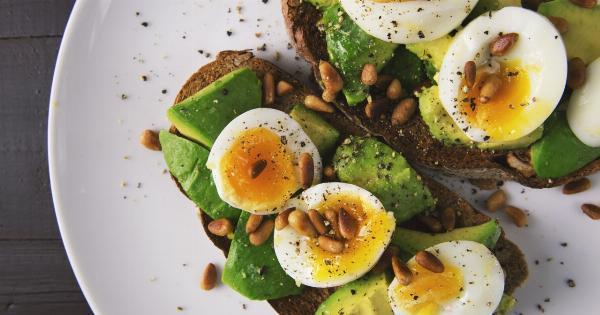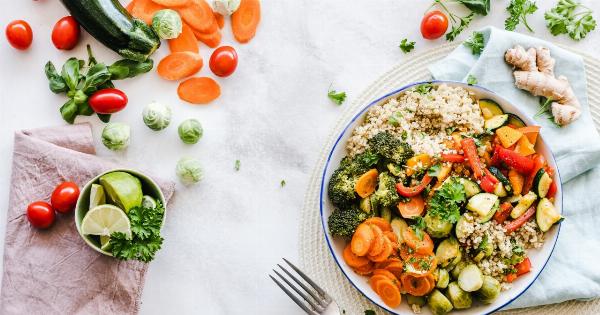Food combinations play a crucial role in our overall health and well-being.
While certain pairings can enhance the nutritional value and taste of a meal, others can have adverse effects on our digestion, absorption of nutrients, and even lead to discomfort. The science behind incompatible food combinations explores the intricate interactions between different foods and how they can impact our bodies.
In this article, we delve into some common food combinations that are considered incompatible and the scientific reasons behind their effects.
The Basics of Food Combining
Food combining, also known as the rules of food synergy, involves understanding how different components of a meal interact with one another.
It focuses on optimizing digestion and nutrient absorption by avoiding combinations that can hinder these processes. The principles of food combining vary across different dietary philosophies and cultural practices. However, some general guidelines are universally recognized.
The Role of Enzymes
Enzymes are key players in the digestion of food. They are responsible for breaking down complex nutrients into simpler forms that our bodies can absorb. Each enzyme is specific to a particular food component and operates within a specific pH range.
Digestive enzymes like amylase, protease, and lipase are produced by our bodies to aid in the breakdown of carbohydrates, proteins, and fats, respectively. However, certain food combinations can create an unfavorable environment for these enzymes, consequently hindering the digestion process.
Protein and Starch
One classic example of an incompatible food combination is the pairing of protein-rich foods with starches.
Digesting proteins requires an acidic environment in the stomach, while starchy foods are broken down through alkaline enzymes in the mouth and small intestine. When consumed together, these two food groups can neutralize each other’s enzymes and slow down the overall digestion process. This can lead to fermentation, bloating, and gas formation in the gastrointestinal tract.
Acidic Fruits and Starches
Acidic fruits, such as citrus fruits and pineapples, have enzymes that work optimally in an acidic environment. However, when combined with starches, the alkaline environment of the digestive system can interfere with their digestion.
As a result, the fruits can remain in the stomach for an extended period, leading to acid reflux, heartburn, and discomfort.
Fat and Protein
Fats and proteins require different enzymes for digestion. Proteins are primarily digested in the stomach, whereas fats undergo digestion in the small intestine.
When consumed together, the presence of fats can slow down the digestion of proteins, leading to prolonged stomach emptying and potential indigestion.
Dairy and Certain Foods
Dairy products contain a protein called casein, which forms curds in the stomach when combined with stomach acid.
When dairy is consumed with foods rich in tannins, found in tea, coffee, and some fruits, the tannins can precipitate the curds, making digestion difficult. This combination may lead to gastrointestinal discomfort and even allergies in some individuals.
High-Sugar and High-Protein
The simultaneous consumption of high-sugar foods and high-protein foods can be problematic. Sugars tend to pass through the stomach quickly, while proteins require more time for digestion.
When consumed together, the sugars can cause the protein to putrefy in the stomach due to delayed digestion, resulting in bloating, gas, and fermentation.
Improved Digestion with Proper Combinations
While certain food combinations can be problematic, there are also numerous combinations that can enhance digestion and nutrient absorption. For example, pairing vitamin C-rich foods with iron-rich foods can improve the absorption of iron.
Similarly, consuming healthy fats with fat-soluble vitamins can enhance their bioavailability. Understanding and implementing these combinations can optimize the nutritional benefits derived from our meals.
Individual Differences and Listening to Your Body
It is important to note that food compatibility can vary from person to person. While certain combinations may cause discomfort in one individual, others may tolerate them well. Our bodies have unique biochemistry and digestive capabilities.
It is essential to listen to our bodies and pay attention to how different food combinations make us feel. This self-awareness can help identify personal intolerances or sensitivities to certain combinations and guide our eating habits accordingly.
Conclusion
The science behind incompatible food combinations sheds light on the intricate relationships between different foods and their effects on our digestion and overall well-being.
By understanding the principles of food combining and the role of enzymes, we can make informed choices about our diets. While avoiding certain combinations may alleviate discomfort, embracing proper food combinations can improve digestion and optimize nutrient absorption.
Remember, it is crucial to tune in to our bodies and make choices that work best for our individual needs.





























